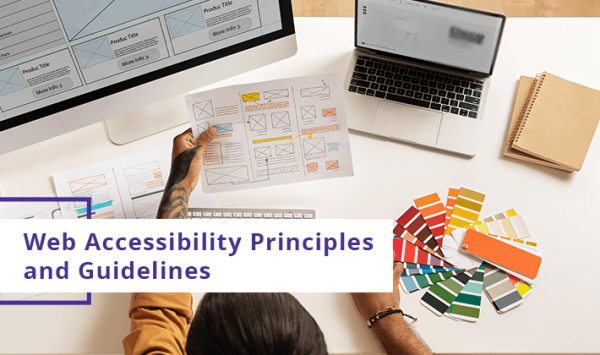In today’s digital world, websites are essential for businesses of all sizes. They provide a way to connect with customers, promote products and services, and build brand awareness. However, for people with disabilities, websites can be inaccessible. This means that they may not be able to use the website at all, or they may have difficulty navigating and using it.
Web Accessibility Principles
There are four key principles of accessible website design:
- Perceivable: The website should be perceivable to people with different sensory abilities. This means that the website should be accessible to people who are blind, deaf, or have low vision or hearing.
- Operable: The website should be operable by people with different physical abilities. This means that the website should be accessible to people who use wheelchairs, have limited mobility, or have difficulty using a keyboard or mouse.
- Understandable: The website should be understandable by people with different cognitive abilities. This means that the website should be clear and concise, and it should use plain language that is easy to understand.
- Robust: The website should be robust enough to work with a variety of assistive technologies. This means that the website should be compatible with screen readers, screen magnifiers, and other assistive technologies.
Guidelines for Accessible Website Design
There are a number of guidelines that can be followed to ensure that websites are accessible. Some of the most important guidelines include:
- Provide text alternatives for all images and videos. This allows people who are blind or have low vision to understand the content of the images and videos.
- Use high-contrast colors. This makes it easier for people with visual impairments to see the text and other content on the website.
- Make websites navigable using a keyboard. This allows people with mobility impairments to use the website without a mouse.
- Simplify page layouts. This makes it easier for people with cognitive impairments to understand the website’s content.
- Provide transcripts for audio and video content. This allows people who are deaf or hard of hearing to understand the content of the audio and video content.
Benefits of Accessible Website Design
There are many benefits to designing accessible websites. Some of the benefits include:
- Improved user experience: Accessible websites are easier to use for everyone, regardless of their abilities. This can lead to a better user experience for everyone.
- Increased accessibility: Accessible websites are more accessible to people with disabilities. This can help to ensure that everyone has equal access to the internet.
- Legal compliance: In some countries, there are laws that require websites to be accessible. By designing accessible websites, businesses can help to avoid legal liability.
- Positive reputation: Businesses that are committed to accessibility are seen as being more progressive and inclusive. This can lead to increased customer loyalty and brand awareness.
Tips for Selecting Colour Combinations that Meet Accessibility Standards
- Use a contrast checker. There are many online tools that can help you check the contrast between your colors. The Web Content Accessibility Guidelines (WCAG) recommend a minimum contrast ratio of 4.5:1 for text and background colors.
- Use high-contrast colors. This means using colors that have a significant difference in brightness. For example, black text on a white background is a high-contrast combination.
- Avoid using colors that are too similar. This can make it difficult for people with low vision to distinguish between colors.
- Use color to supplement, not replace, other forms of information. For example, if you have a button that says “Click here,” you should also include alt text that describes the button’s function. This way, people who can’t see the color of the button will still be able to understand what it does.
- Test your color combinations with a variety of devices. Different devices may display colors differently, so it’s important to test your color combinations on a variety of devices before you publish your website
Conclusion
By following the key principles and guidelines of accessible website design, businesses can create websites that are accessible to everyone. This can lead to improved user experience, increased accessibility, legal compliance, and a positive reputation. Our accessibility services will help you to make your website and digital documents accessible to everyone.





